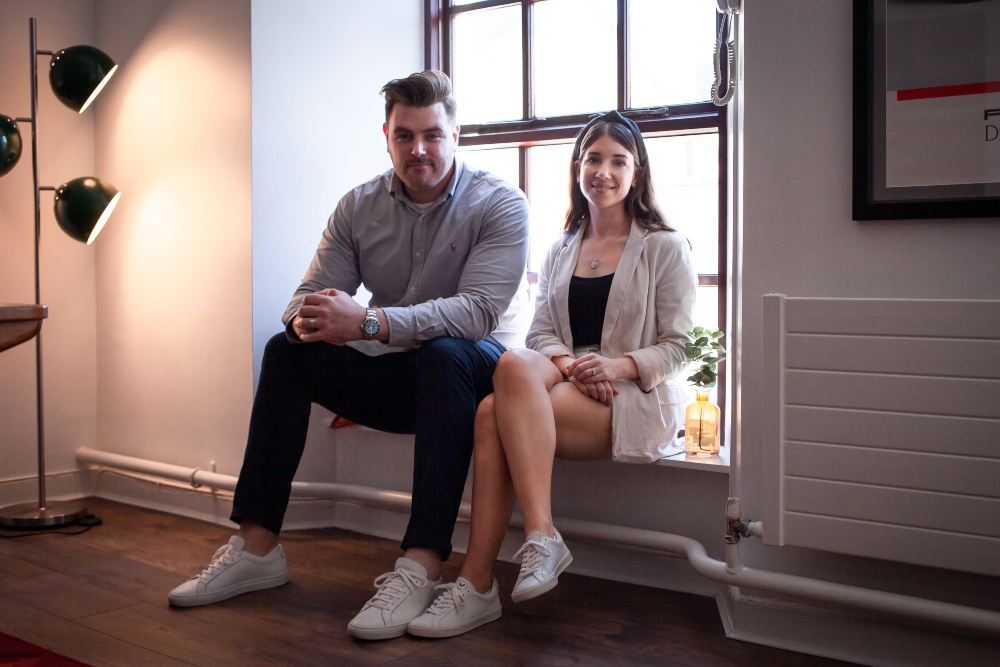Omnichannel future: Eamon Brett from Shopify offers Irish SMEs advice on how to get selling online and explains how the Shopify platform works.
Canadian e-commerce platform Shopify is an important port of call for businesses seeking to start selling online quickly and affordably.
The platform – aimed at online stores as well as retail point of sale systems – offers a suite of services including payments, marketing, shipping as well as customer engagement tools.
“Customers are in their pyjamas sipping wine shopping from your competitors. What are you doing to compete with that?”
More than 1m businesses in 175 countries were using the platform as of January 2021.
Shopify currently employs more than 400 remote employees in Ireland in customer support and engineering roles since it arrived in Galway in 2017.
The Covid-19 pandemic and various lockdowns led to Irish businesses embracing e-commerce and online shopping at an accelerated pace to stay engaged with the buying public.
An estimated 60pc of all online commerce conducted by Irish people leaves these shores direct into the coffers of global giants. Before Christmas there was a surge of support to buy Irish online out of a public recognition that shopping locally online saves businesses and jobs.
Over the coming weeks ThinkBusiness will focus a series of articles on the omnichannel future of retail including how to go online and sell as well as case studies of businesses that have adapted, including SMEs that have successfully received funding as part of the Government’s Online Voucher Scheme.
We spoke to Eamon Brett, senior lead for Shopify in Ireland, about how Irish businesses can ensure they are part of the digital commerce revolution.

What are your thoughts on the imperative to get more Irish firms trading online?
Data shows that anywhere between 30pc and 50pc of current retail is happening online.
If you’re looking at a long-term sustainable business model, it has to include the online space in some way, as we all have a computer in our pockets every day. The majority of online browsing is happening by mobile phone and there’s a growth in the amount of online spending that’s happening through mobile as well.
“Consumer behaviour shifted long before Covid and lockdowns have just increased the pace at which those ‘Add to Carts’ and checkouts are the go-to option for everything from essential bits and bobs to high ticket items”
If you look at every customer who has been in your store – remember they have a mobile phone where they can buy from you again that evening while they’re scrolling through social networks online. And if not from you then from whom??
Looking back to 2019, consumer trends pointed out the need for retailers to look at a cross-platform experience for customers, and Covid this year has only amplified the need here.
Post-Covid, the research suggests online shopping, and supporting local businesses as two of the key trends that will continue on:
Consumer behaviour shifted long before Covid and lockdowns have just increased the pace at which those ‘Add to Carts’ and checkouts are the go-to option for everything from essential bits and bobs to high ticket items. Just ask any delivery company or postal worker and they will tell you the volume of packages is staggering, a lot of them with Chinese labels. Customers are in their pyjamas sipping wine shopping from your competitors. What are you doing to compete with that?
What are the most practical steps a business can take today to build a presence online and using your platform (Shopify)?
Take a look at where you feel your customers are, and which of these stores will then help you figure out how to reach them. Facebook continues to be a big driver of business, as is Google search, Instagram, and increasingly newer platforms like TikTok. Once you find your audience, you can bring them to your store.
“A very basic practical tip if you rely on footfall at the moment: have a QR code printed out in your store window that links to your online store”
Building a customer persona is essential so they have an idea who they’re building for. Template here
Shopify has a marketing section integrated in the back- office admin area that is there to help you coordinate your marketing efforts into one dashboard. Shopify is the first commerce platform to integrate Google’s new Smart Shopping campaigns – which lets you run an effective Google campaign without having to be familiar with advanced ad settings. There’s also inbuilt ability to run Facebook and Instagram ad campaigns and even Shopify Email campaigns to help you turn that first sale into repeat business.
If you have existing customers, do you have their email addresses and have they opted into marketing emails from you? Continue the conversation with your customers and direct them back to your online store to become a repeat customer.
A very basic practical tip if you rely on footfall at the moment: have a QR code printed out in your store window that links to your online store. Then even if your store is closed, a potential customer can see that sign, be brought to your store on their mobile, and you can make that sale out of hours. We have a simple free tool to help you make a storefront sign: https://www.shopify.ie/tools/signage-maker?ref=support-ireland
A little research on hashtags could prove very useful #shoplocal # of their town/county #shopinireland #buyIrish etc
Video, video, video. People buy from people they know, like and trust. Now more than ever the human face in front of the camera is the greatest asset a business can leverage. Pick up the smartphone and get creating short pieces of content to let people know who is behind this business.The funnel has to always begin with awareness so don’t hide behind a logo.
How does the platform work and what are the best tips for making it perform?
Shopify is an all-in-one commerce platform that enables you to start, run, or grow your business – yes, including hosting and a SSL (Secure Socket Layer) cert for all plans at no extra cost. No matter how big or small your business, Shopify can flex to fit. We aim to take out the hassle and give you the tools you need. You can see a rundown of the features. Click here and we have a 24/7 support team on hand to answer any questions and help you as you get to grips with the platform.
“My pro-tip: Don’t skimp on packaging, as that’s your opportunity to surprise and delight your customers”
The easiest way to understand how straight forward it can be is to sign up for a free trial and play around with the back-office admin view that manages the store operations. From there you can decide where you’re going to be listing the products – your own online store, or a Facebook page, or embedded buy buttons for other online spaces. We want you to be able to sell everywhere you want.
We have help guides and videos to walk you through anything you don’t immediately figure out whether you’re brand new to business or an existing businesses looking to pivot online.
Get some of your products listed online (focus on your best sellers first, or start with just gift cards if that works for your business), do some test orders to see the flow for your customers, then figure out how that total customer journey to having the product in their hands. Are you looking at Click & Collect? Will you be delivering locally or using a shipping company? What will postage / shipping costs be and are you including them in your prices and offering free shipping, or being transparent to your customers about all the costs individually?
My pro-tip: Don’t skimp on packaging, as that’s your opportunity to surprise and delight your customers. Even just including a little handwritten note helps your customer see they’ve supported a business run by people, not a big box faceless store.
Maybe you look at keeping your costs down on web-design initially by using a free theme from Shopify customised with your own photos and branding. Flesh out the look of the store further using the free lifestyle and product stock photography from Burst. Then take the money you would have spent on design, and funnel it into marketing that helps tell the store of your business and your products.
Anything that has a cost involved in running your online store: subscriptions; advertising; paid themes; domains; etc are all eligible for the Trading Online Voucher. If you all-in on building your online presence, you can choose to pay annually to get a reduction on the total subscription cost – savings from 10% – 20% depending on how far in advance you want to pay.
What are your thoughts on the future of retail in a world where online could become a preferred way for consumers to shop?
The future of commerce is less about specific channels or stores, and even more than just an omnichannel perspective, and is more about reducing the friction between your products and potential customers.
“Omnichannel is the current buzz word, but I tend to think of it a bit simpler: wherever your customers are, is where you could be selling”
Stop thinking of online as separate from in-person and consider them all as ways that are complementary experiences for customers to discover your products.
Traditional retail will always have a place and people still love to connect with other people and get that personal experience while shopping in person. One of my own early experiences working in retail was entirely focused on the experience the customer had in the store, as much as the quality of the products. That’s not going to change – how your customer feels during the experience of shopping in person is going to be as much of a focus. Particularly when just buying a product is so easy to do online.
Retail has an opportunity to allow customers to experience products in a way that is not always as easy to provide online. However, we can’t see the two areas as opposing sides in retail; omnichannel is the current buzz word, but I tend to think of it a bit simpler: wherever your customers are, is where you could be selling.
Right now, everyone’s on the phones and reading things online, even when they’re walking around a town centre. So redirect that footfall from idle scrolling on a mobile phone over coffee, to discovering your products and having them walk in the door of your store. Or they’ve already bought the product and are dropping in to collect.
Remove the barriers between in-person and online, as your customers likely don’t see that barrier themselves anymore.
Research shows that pedestrians pay up to 65% more than motorists when shopping locally and there’s data that shows similar increases for cyclists.
One interesting case in Seattle looked at two streets, where one had bike parking installed and another didn’t and the data from that suggested that if you want to level up footfall and spend – put bike parking outside your store! “Biking and walking provide an estimated return on investment of $11.80 for every $1 invested.” – if we want to see traditional retail in our towns and cities in future, we need to fully understand placemaking and empowering people to want to be in the street, walking, and spending.
This isn’t news – as long ago as 2015 Bloomberg was gathering information about the impact of cycle lanes the future of retail is a future that combines the experience of pedestrians on a street, with the convenience of paying online, and effective home delivery for local purchases.
I’ve been at craft markets where someone couldn’t get their card machine to work, so I went on their website on my phone while chatting with them and bought the product that way. Mobile phones have brought the internet out from dedicated desktop computers in computer rooms, and have become more common than car keys in people’s pockets. Wherever someone has a phone, you can have a retail transaction. (and ask for their email address so you can build your marketing list).
Video: How to get your business selling online
With Christmas 2020 now past, the year ahead 2021 still presents retailers with a challenge to go online to not only deal with closed premises if they are deemed non-essential but to address the expectations of an increasingly digitalised consumer.
To get the message out to SMEs, Bank of Ireland collaborated with online shopping platform Shopify as well as Pointy, the Irish platform recently acquired by Google that helps shoppers find via the internet the products they need in your physical store, and the E-commerce Association of Ireland (eCAI), to highlight the opportunities that exist online.
By John Kennedy (john.kennedy3@boi.com)






